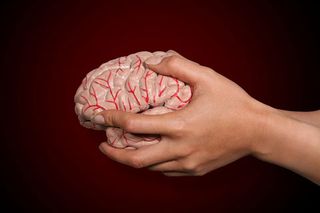Brain Zap Improves Dexterity

A slight zap of electricity to the brain could make righties better at using their left hands, a new study shows.
Researchers from the Beth Israel Deaconess Medical Center and Harvard Medical School used a non-invasive electrical stimulation technique to see if it made 16 healthy, right-handed volunteers better at using their left hand.
While the test subjects didn't suddenly become ambidextrous, the dexterity of their left hand did increase slightly.
The technique used is called transcranial direct current stimulation (tDCS), which involves attaching electrodes to the scalp and passing a weak direct current through the scalp and skull to alter the excitability of neurons in the underlying brain tissue.
The researchers looked at the effects of applying tDCS to the motor region on one side of the brain as compared to both sides. After the stimulation, the volunteers, who were not aware which type of stimulation was being done, used the fingers of their left hand to key in a series of numbers on a computer.
Stimulating both the right and left motor regions resulted in 24 percent improvement in the subjects' scores. Stimulating only one region only showed a 16 percent improvement. (A "sham treatment" where no stimulation was done resulted in a 12 percent improvement.)
The study's findings, detailed in the Oct. 27 issue of the open access journal BMC Neuroscience, are more than a way to make better typists.
Sign up for the Live Science daily newsletter now
Get the world’s most fascinating discoveries delivered straight to your inbox.
"The results of our study are relevant to clinical research on motor recovery after stroke," said study team member Gottfried Schlaug. Applying this stimulation to the motor regions of the brain could help stroke patients recover some of the motor abilities they may have lost, he said.
The research was funded in part by the National Institute of Neurological Disorders and Stroke, the Center for Integration of Medicine and Innovative Technology (CIMIT), the Grammy Foundation and the Michael Smith Foundation for Health Research.
- Video – Brain-Healing Nanotechnology
- What Makes a Lefty: Myths and Mysteries Persist
- 5 Ways to Beef Up Your Brain
Most Popular


